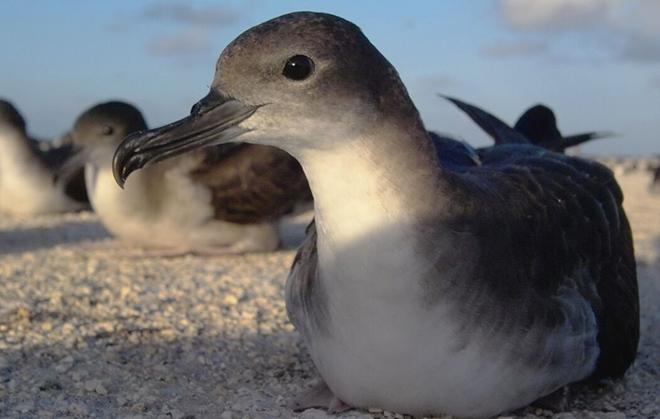Published in the Ocean Watch column, Honolulu Star-Advertiser © Susan Scott
September 7, 2015
We humans feel the effects of these storms in sweat, mosquito bites and high electrical bills. But what effect do cyclonic winds and torrents of rain have on migrating kolea? Some readers have been wondering via email how, and if, the birds flying from Alaska to Hawaii manage.
According to plover researcher Wally Johnson, the year-to-year differences in the survival rates of Hawaii’s Pacific golden plovers are probably due to weather. Severe winds during migration probably cause some mortality.
 An adult wedge-tailed shearwater.
An adult wedge-tailed shearwater.
Courtesy Alex Wegmann
But never underestimate these extraordinary birds. In spite of storms, Arctic predators and enormous expanses to navigate, the survival rate of kolea is high.
“We know the birds have the capacity to fly for very long distances,” Johnson said in email. If blown off course, he continued, “they likely can re-orient and get back on target. We see lots of zigs and zags in our geolocator tracks and these must be wind-related.”
So for those still waiting for their feathered friend to return, there’s hope. And if an adult bird doesn’t make it back, natural selection might fill the vacancy. An empty territory is a bonanza for summer offspring that survived the flight to Hawaii and are now searching for food.
Another reader emailed that he recently hiked to Kaena Point to see wedge-tailed shearwaters (nickname: wedgies) but saw only some downy feathers and an unhatched egg. Because he saw rat traps, and concrete poured along the base of the fencing, he wondered whether predators were getting in.
Wedgie researcher Michelle Hester replied to my question, “The predator fence is working. Low trapping efforts will always be necessary inside the fence, as the ocean edges are open to critters..
The best time to see wedgies is July to November at dusk, when adults fly to the colony. Chicks begin fledging around Thanksgiving. Chicks aren’t usually visible because they wait deep inside their burrows for their parents to deliver food. But there are so many wedgies at Kaena that some parents nest under bushes or in burrows with skylights. You might see these chicks at any time..
After Thanksgiving the chicks wander around, giving admirers a good look at these native treasures. People from the mainland often say that Hawaii has no seasons. Tell that to the birds.